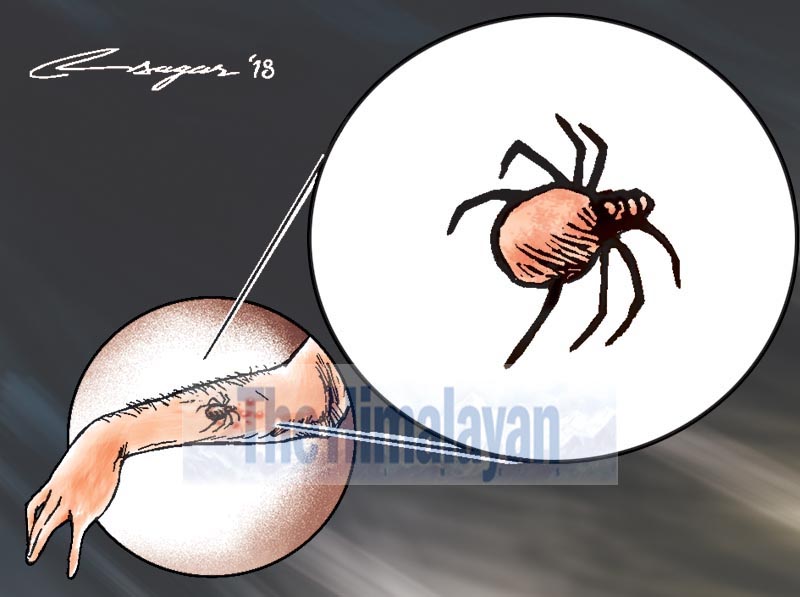Cases of scrub typhus on the rise
Kathmandu, September 3
At least 72 people have been tested positive for scrub typhus in Kathmandu. Health experts have warned that the number might increase till mid-November.
According to data provided by Epidemiology and Disease Control Division, 234 people have tested positive for scrub typhus from June to August 2019. The disease has been reported from Banke, Palpa, Kathmandu, Dhading, Morang, Chitwan, Kaski, Rupandehi, Dadeldhura, Kailali, Ilam, Kavrepalanchowk and Makawanpur.
From among the 234 cases, Kanti Children’s Hospital recorded 24 cases of scrub typhus in the same time period.
Scrub typhus, also known as tsutsugamushi disease, is an infectious illness caused by Orientia (Rickettsia) tsutsugamushi, transmitted to humans and rodents by the bite of the larva of trombiculid mites (chigger). The disease is transmitted from mites to rats and mice. The mites in their larval stage contract the disease organism by biting these rodents. The mites are both the vector and reservoir of the disease.
Infected chiggers are specifically found during the wet season in dense areas of scrub vegetation which is when the mites lay their eggs. Areas like forest clearings, riverbanks, and grassy regions provide optimal conditions for infected mites to thrive. The southern Tarai region of Nepal is a suitable environment for scrub typhus, said Anup Bastola, consultant tropical medicine physician at Sukraraj Tropical and Infectious Disease Hospital, Teku.
The disease is seen more in children as they are in close contact with mice and rats. They play outdoors and get inside bushes where there are mice and rats. This is how children usually come in contact with mites, said Baburam Marasini, former director at EDCD.
Female children are more prone to the disease as they usually wear clothes which expose skin. “Children also urinate in open spaces or in areas where there are bushes. This is how they come in contact with the mites,” added Marasini.
The eggs of the mites are dormant during winter, but they grow when they get favourable environment, according to Marasini. It is not only children, but human beings of all ages that are infected. It can cause death due to late presentation, delayed diagnosis and drug resistance, said Bastola.
The disease is seen in people who work outdoors, usually in the fields where there are rats and mice, said Bibek Kumar Lal, director of EDCD.






